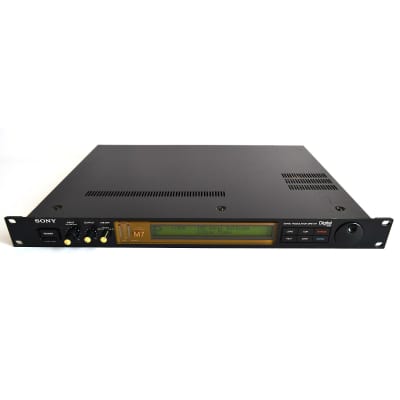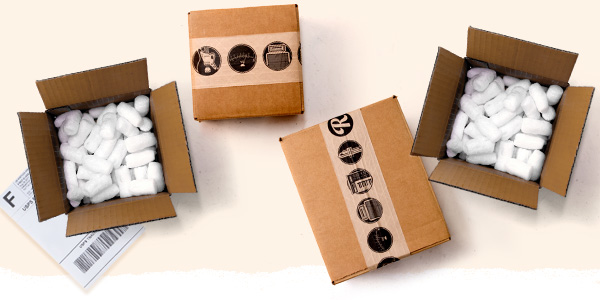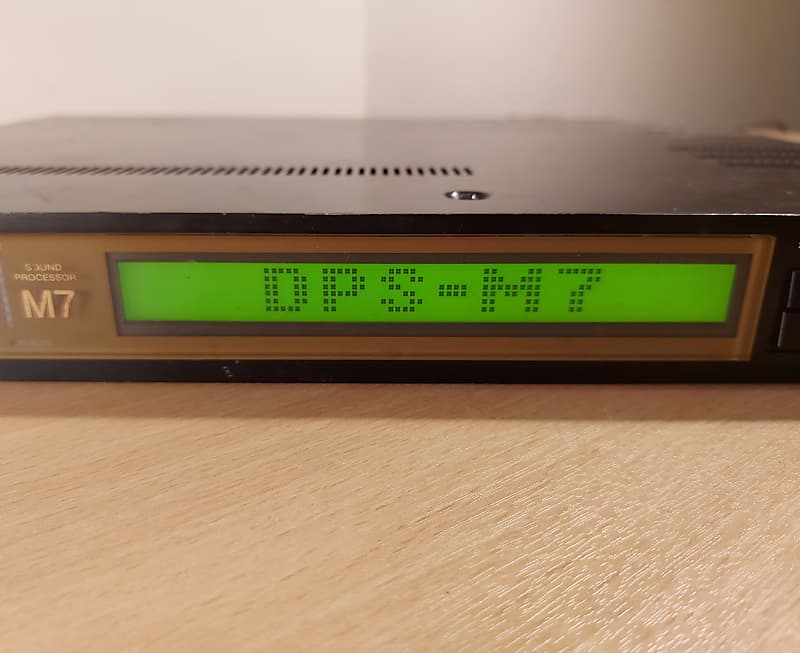

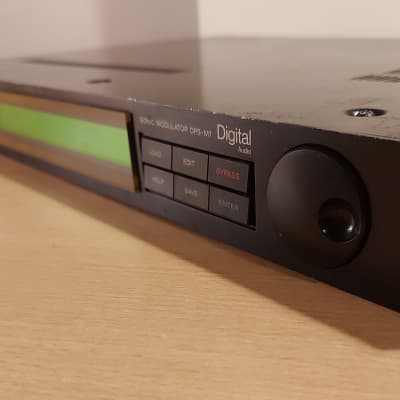
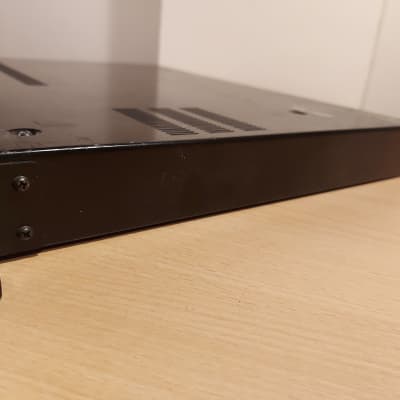
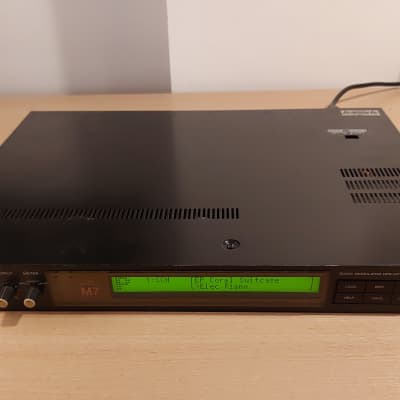
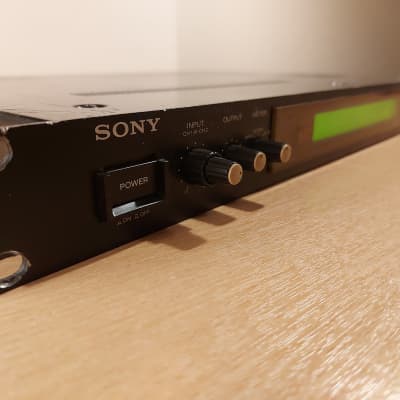
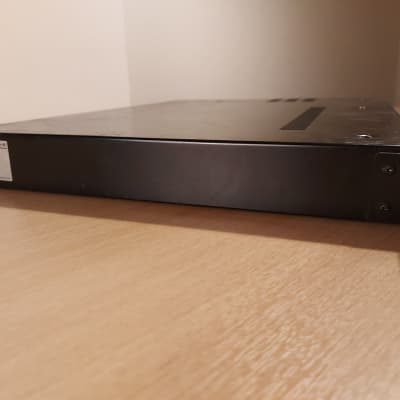

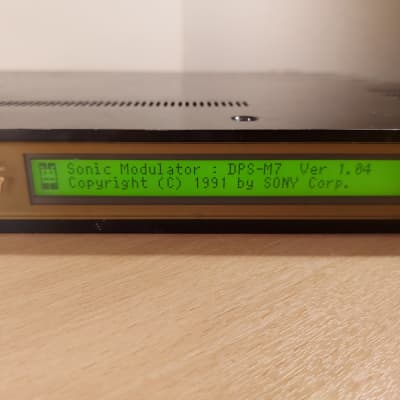
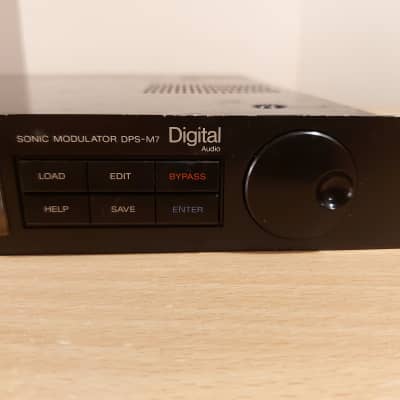
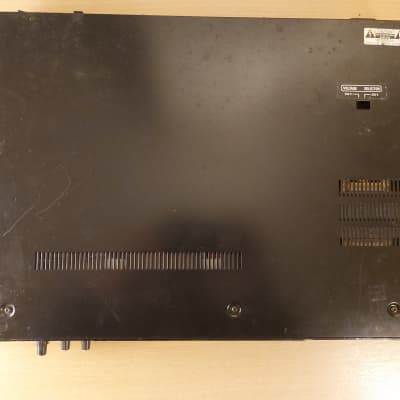
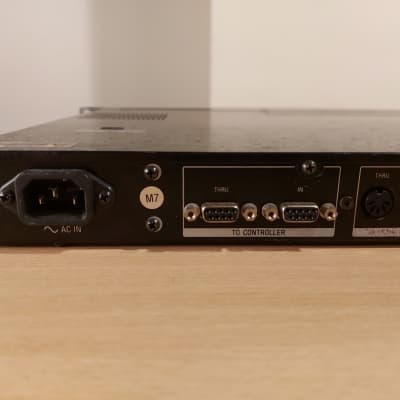
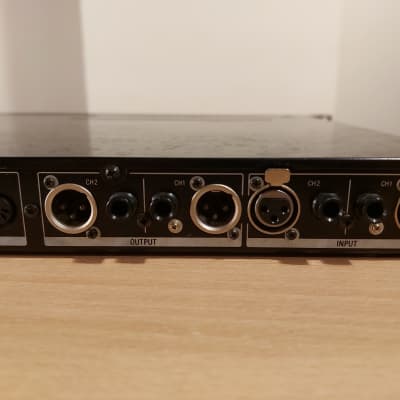
The Sony DPS-M7 Sonic Modulator is a 1u 19” rack multi FX unit from the early nineties. It’s one of a range of units Sony marketed in that era when they made a serious play for the high end studio FX market dominated by Eventide, Lexicon and TC Electronic. The range initially consisted of four units, all with more or less the same hardware, that were each targeted at a different class of effects. There was the R7 (reverbs), the D7 (delays) and the semi-mythical F7, some kind of filter unit which I’m not sure was ever sold outside Japan and apparently had a virtual analogue synth and drum machine on it – weird! The fourth one was this, the M7, which focused on modulation effects like flangers, choruses, phasers, Leslie speaker simulations and so on.
The M7 packs an enormous amount of processing firepower under the hood. Each stereo patch consists of two pre effect blocks based on five algorithms, where the focus is on EQ and dynamics, the main modulation effect block, and a post effect block where more dynamic processing can be configured prior to the D/A output stage. The algorithms available for the main modulation effect are (deep breath..) Stereo Chorus, Deca Chorus, Multi Chorus, Band Chorus, Stereo Pitch Shifter, Band Pitch Shifter, Pitch Shift Modulation, Reverse Shift, Stereo Ensemble, Multi Phaser, Stereo Flanger, Multi Flanger, Modulation Delay, Spiral Modulation, Stereo Panner, Haas Panner, Doppler, Vibrato + Tremolo, Ring Modulator and Rotary Speaker.
Each algorithm has a ton of bespoke parameters to edit and there’s a separate global delay and LFO too, plus an envelope follower, so it all adds up to a universe of sound design potential. As you can imagine, navigating that universe via a two line LCD display can be a handful, even though the DPS-M7 display is larger than most from this era. You will need the manual if you want to do anything more than cycle through the presets! Luckily it’s easy to find online and it’s as clear, comprehensive and detailed as you’d expect from a major Japanese electronics corporation going all out to impress a market of professional audio engineers.
The presets give a good idea of what the DPS-M7 is capable of. I particularly like London Symphony, a mega ensemble chorus and octave doubler that makes the input sound likes it been tracked about eight times, and Spiral Pole which is a crazy ‘barber’s pole’ phaser effect. There’s lots of other more subtle but equally great phasers, flangers and choruses too.
The DPS-M7 is a solidly built, professional grade machine with an internal PSU. This unit has some rack rash but it is functionally perfect. Overall it’s a weird and interesting alternative to an Eventide for those who have a taste for the unusual and don’t mind getting geeky.
DPS-M7s are very, very rare in the UK, and there is almost nothing to go on in the way of sales history. So the listed price here is nothing more than a guess of what it may be worth to someone out there. I’ve enabled offers, so if it piques your interest but you think I’ve overpriced it, then let’s talk.
Reverb Buyer Protection
Reverb has your back if your item is lost, damaged, or doesn't match its description. Simply report any issues within 7 days and we'll help you get a full refund.Learn more about Reverb Buyer Protection.
| Listed | a month ago |
| Condition | Very Good (Used) Very Good items may show a few slight marks or scratches but are fully functional and in overall great shape.Learn more |
| Brand | |
| Model |
|
| Finish |
|
| Categories | |
| Year |
|
| Made In |
|


